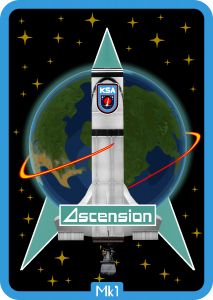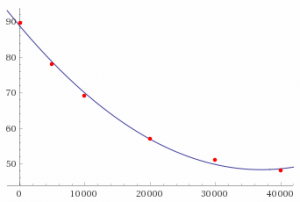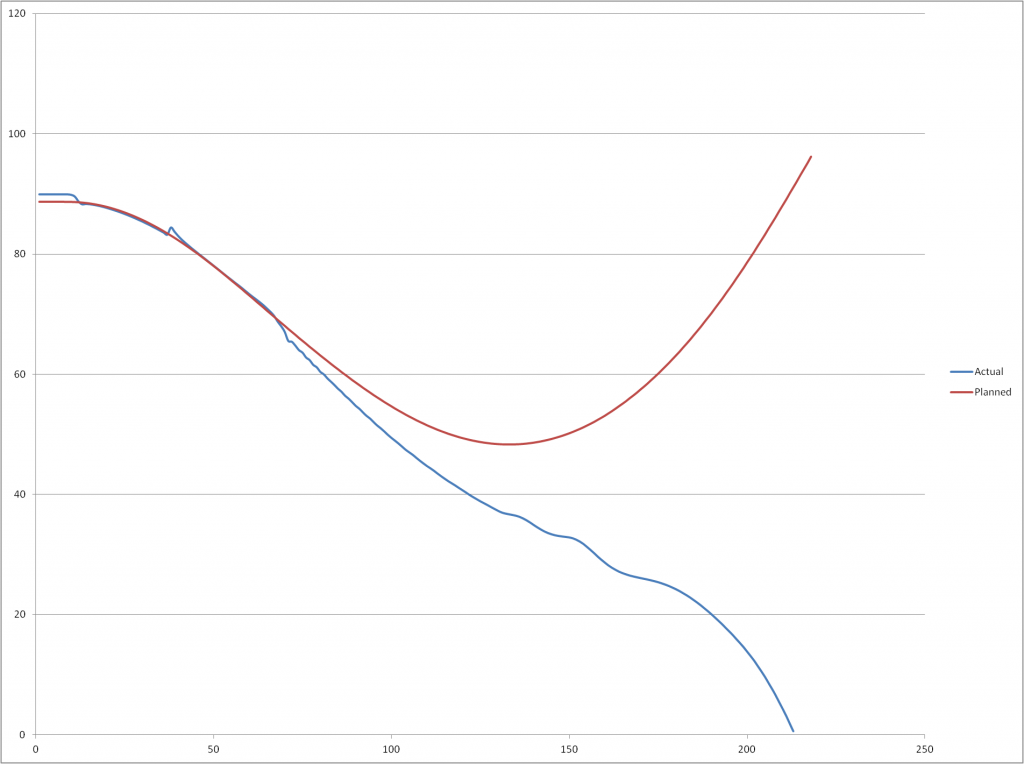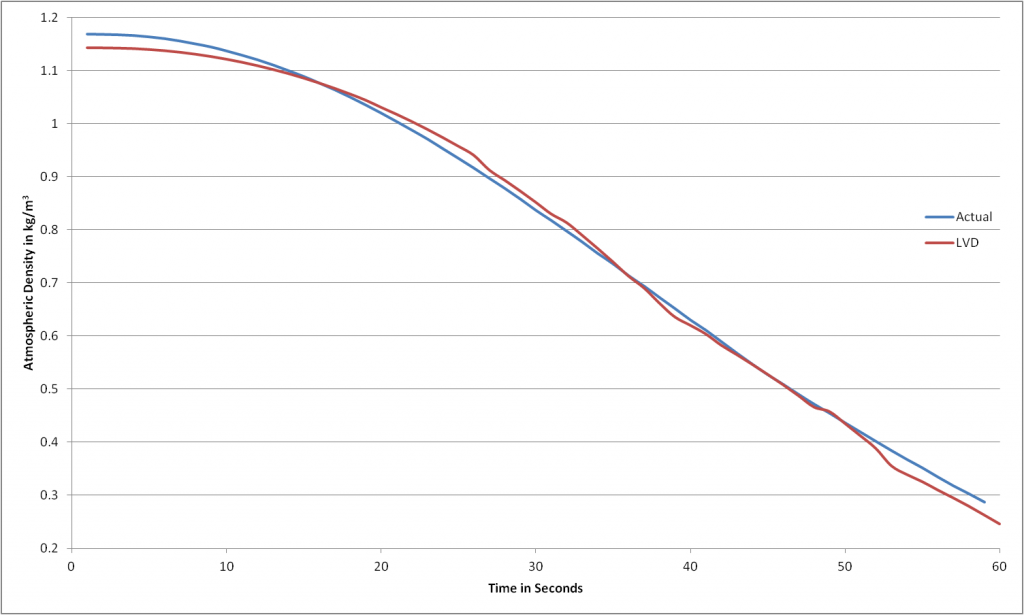 Finally, after nearly 3 years of rocket development, the time had come to launch a kerbal into space! While we expected there might be some issues during the mission no one was ready for the Monolith to make another attempt at keeping us grounded. After Specialist Bob was loaded up into the rocket and it was raised vertical on the pad, atmospheric pressure began to decline shortly after it was powered up, a sign that storms were forming. This storm was being generated by the Monolith and was last seen to impact rocket flights back in February. Since then a cooling system was installed to prevent the storms and it appeared to work until this flight, which led us to develop a new theory as to why the Monolith was generating the storms in the first place.
Finally, after nearly 3 years of rocket development, the time had come to launch a kerbal into space! While we expected there might be some issues during the mission no one was ready for the Monolith to make another attempt at keeping us grounded. After Specialist Bob was loaded up into the rocket and it was raised vertical on the pad, atmospheric pressure began to decline shortly after it was powered up, a sign that storms were forming. This storm was being generated by the Monolith and was last seen to impact rocket flights back in February. Since then a cooling system was installed to prevent the storms and it appeared to work until this flight, which led us to develop a new theory as to why the Monolith was generating the storms in the first place.
The Flight
Rattled from his experience in the capsule during the storm, Bob ceded his spot to his backup Specialist Bill, who boarded the rocket 6 days later after a new cooling unit was installed around the Monolith and a day’s delay due to weather. Pre-launch operations proceeded without issue leading up to the 5 minute GO/NO GO poll, which failed due to upper-atmospheric wind conditions that neared the launch commit limits for flight. After some discussion among the launch team, using our experience with past Ascension missions, the decision was made to proceed with the launch. The countdown resumed and the rocket lifted off the pad with Bill atop it at 15:58:00.20 local time.
As with previous Ascension Mk1 launches, the engine start came at L-6s, with a run-up to 1.2 TWR launch thrust prior to lift off. The engine maintained this thrust until L+3s when the rocket cleared the tower and then throttled up to 99.63% total thrust. This gave the rocket a TWR of 1.65, which would be held during the entire ascent in order to both reduce loads on the crew and also keep the apokee low enough that a gentle return through the atmosphere was ensured. At the same time as the throttle-up the rocket rolled to orient itself on a heading of 53° before beginning to pitch over and head down range. All this was done automatically – Bill had manual controls if needed but as long as the AFCS continued to function nominally he only had to call out instrument readings.
The rocket reached Mach 1 and went supersonic at L+54s, just 6s after passing through MaxQ with a dynamic pressure of only 19.143kPa. Despite the usual “pitch bump” that occurred earlier in the ascent, up to this point the pitch-over was proceeding as planned and the heading remained on course with none of the deviation shown in previous missions. After passing through 10km ASL and 1min of flight time, the elevator control surfaces reached their maximum deflection while trying to slow the rate of pitch-over. although still within the lower atmosphere, the rocket was not traveling fast enough for the control surfaces to work against the natural tendency to pitch over due to the inherent 5° fin angle.
A flight anomaly was called and the launch control team began working through the steps to authorize the activation of the Launch Escape System. However they determined that even with the increased pitch-over the rocket’s apokee would continue climbing up towards space and the reduced throttle would prevent any damaging heat friction during its extended time within the atmosphere. Furthermore the rocket remained on course which would bring it down over low lands if it fell short of the water. Bill was instructed to safe the LES and continue his instrument call outs as the rocket continued its ascent, passing through the planned 48° pitch hold and continuing to slowly rotate downwards.
The rocket continued is gradual ascent and pitch-over, the apokee finally reaching space at L+2m36s while passing through 51km and traveling at 1.251km/s orbital velocity. No friction heating occurred and Bill remained comfortable within the capsule as the rocket exited the atmosphere at L+3m15s with 3.7% of fuel still remaining. The engine shut down at L+3m31s and 10s later the capsule was detached from the lift stage. RCS thrusters activated for 10s to push the capsule clear of the lifter.
The success of reaching space with a crewed capsule was unfortunately overshadowed by controllers scrambling to determine how the shallow ascent would affect the re-entry. Meanwhile Bill attempted to activate the automated RCS controls only to find the guidance computer frozen, still thinking it was making an ascent due to not properly holding pitch on the way up. With only just under 5.5 minutes from MECO to re-entry the decision was made to leave the automated guidance system alone and switch to manual RCS controls. By this time the capsule’s rotation had brought it around to face retrograde and Bill fired the thrusters to maintain that orientation.
As he passed through 107.996km apokee at L+5m56s, ground controllers informed Bill that his re-entry would place him over water, and he was to proceed as planned. Still manually holding the capsule in a retrograde position, Bill had little spare time to loosen his straps and peer out the window, managing to only capture one photo. As he floated through space he reported no ill effects and the flight surgeon monitoring his vitals closely also saw no cause for concern.
At L+8m36s the capsule breached the atmosphere traveling at 1.866km/s. Bill had rolled the capsule “up” so the window was now pointing towards space and he was butt-down. During the re-entry comms were lost due to plasma blackout for 1m25s thanks to the shallow descent, during which Jeb on CapCom had the duty of calling out “Control to Ascension, do you copy?” while everyone in mission control waited anxiously for a reply. It was a great relief to hear Bill’s voice come back over the comms. Return of data telemetry showed the main chutes had been deployed in their reefed state to begin slowing the capsule down. During the re-entry Bill sustained a maximum of only 5.896Gs. The chutes fully deployed at 620m and the capsule splashed down 670.803km downrange at L+13m49s. Bill was in space for 5 minutes and 21 seconds.
Flight Analysis
Pitch Anomaly
As mentioned in the previous section, the rocket is built with the horizontal fins angled at 5° off the airflow so the rocket wants to naturally tip over downrange. Not only is this a safety feature in the event of hydraulic control loss, it allows the rocket to fly longer and shallower ascents without having to increase elevator control authority. On the other hand, it could potentially want to nose over so much that the elevator controls can’t stop it. This was a possibility predicted when the idea was first formed but demonstrated for the first time on this mission when the rocket failed to stick to the planned ascent profile:
The slower speed of the rocket meant the lesser force of the air traveling over the control surfaces provided less torque to pull the rocket upright. Thankfully this occurred late enough to not cause a termination of the mission with the activation of the LES.
Frozen Guidance Computer
A bug was discovered in the ascent code that led to the guidance computer failing to come out of its ascent state. The computer was supposed to switch to an attitude hold at 48° of pitch however we overlooked the minimum value that would be produced by our pitch formula: 48.3°. After this point the value would begin to climb again (see the red plot in the previous issue), meaning the rocket pitch would never have reached 48°. However this issue has another facet because due to the stuck control surfaces the rocket did in fact reach 48° – so why wasn’t this code triggered? Because it was checking using the calculated pitch value rather than the actual pitch value. Ooops! This will be rectified in future ascents and thankfully the manual RCS controls functioned perfectly in addition to no complex maneuvers being required.
LVD Performance
Obviously once the pitch profile went wrong the pre-calculated ascent using Launch Vehicle Designer had to be thrown out, but up until that point comparisons can be made. Looking first at the initial pitch profile:
 This is actually rather on-point for what was programmed since the formula used to calculate the pitch angle for a given altitude produces the following:
This is actually rather on-point for what was programmed since the formula used to calculate the pitch angle for a given altitude produces the following:
 So you can see how the line is supposed to be above the planned pitch line for LVD since it is above the red dots denoting the pitch points in the plot just above. We also saw better comparisons to atmospheric density modeling when traveling through the lower atmosphere than on previous flights:
So you can see how the line is supposed to be above the planned pitch line for LVD since it is above the red dots denoting the pitch points in the plot just above. We also saw better comparisons to atmospheric density modeling when traveling through the lower atmosphere than on previous flights:
This means the accuracy of LVD is improving, allowing us to plan more complex ascents with smaller margins of error.
There was also a mass discrepancy with 10.733t being set in LVD while the actual rocket tipped the scales at 10.978t. Closer attention will need to be paid by launch designers to ensure better accuracy in the launch simulations. Thankfully the few hundred kilograms of difference did not amount to much in the case of this mission.
Re-Entry
We just want to make note of the fact that the heat shield used on this mission carried a full coating of ablator. Although we know from previous missions we do not need a full coating to safely return the capsule, the added mass did help with the mission profile by allowing the rocket to not ascend so high and thus make the return easier. The heat shield only lost 3 units of ablative material during the re-entry thanks to the slower than planned descent. This left 197 units remaining and we will re-use the heat shield for the next unkerbed mission to see how it holds up under repeated use, just like the capsule itself.
Future Plans
We have already made note of what we want to do with future missions in this Ops Summary. Specifically for the next kerbed mission the only major change will be to adjust the horizontal fins to only 1° of pitch – enough to ensure the rocket eventually turns downrange in the event of a control failure but not enough that the control surfaces can’t counter the nose drop and follow a more gradual ascent profile. The code error will be patched and the mission will be flown as this mission should have been, giving Commander Val 12-13 minutes of space flight. Some slight ascent profile tweaking will also be undertaken with proper craft mass and a double-check of all other launch vehicle properties. The mission will be scheduled later this week for mid-September.
Additional related news is that now with a successful kerbed mission the current Mk1 capsule is set to be retired in 2020 when a new single-occupancy capsule is designed, designated the Mk1-B. More information on it will be released over the coming months.









